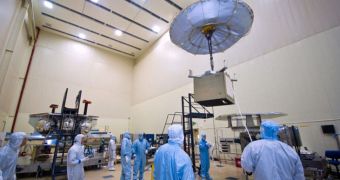In August 2011, NASA plans to launch a new space exploration mission, this time aimed at Jupiter. Dubbed Juno, the spacecraft will travel the distance from Earth to the gas giant within an estimated five years, and is scheduled to reach its destination in 2016. Officials at the American space agency are now proud to announce that the final version of the probe is beginning to take shape at the Denver, Colorado-based Lockheed Martin Space Systems.
According to experts at the NASA Jet Propulsion Laboratory (JPL), in Pasadena, California, the mission is destined to help astronomers, astrobiologists and planetary scientists gain more insight into how the planet appeared, developed and evolved. The main objectives of the flight can be compared to the ones Cassini has in exploring Saturn, also a gas giant. The principal investigator of the Juno mission will be scientist Scott Bolton, who holds an appointment at the San Antonio, Texas-based Southwest Research Institute (SwRI).
“We're excited the puzzle pieces are coming together. We're one important step closer to getting to Jupiter,” reveals Bolton. He explains that the assembly, testing and launch operations phase of Juno began recently, on April 1, inside a high-bay clean room at the Lockheed Martin facility. What this means is that, over the next few months, an army of engineers and technicians will be in charge of outfitting scientific, navigation and propulsion instruments on Juno.
“We plan to be doing a lot of testing in the next few months. We want to make sure the spacecraft is ready for the long journey to Jupiter and the harsh environment it will encounter there,” adds JPL Juno project manager, Jan Chodas. The team hopes that, by peering through the thick layer of clouds surrounding Jupiter, they will be able to gain additional insight into the processes that governed our solar system a short time after it first formed.

 14 DAY TRIAL //
14 DAY TRIAL //